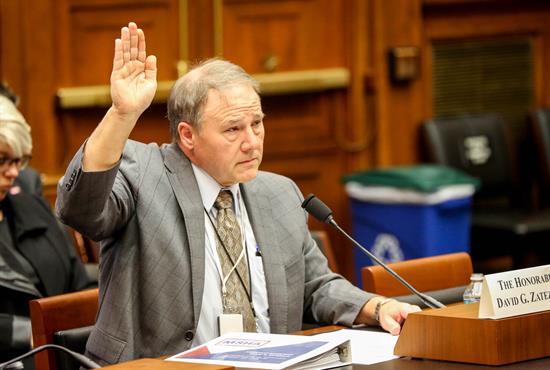Today, the Subcommittee on Workforce Protections, chaired by Rep. Bradley Byrne (R-AL), held a hearing on “Reviewing the Policies and Priorities of the Mine Safety and Health Administration (MSHA).”
“Mining is not only essential for America’s homes and businesses; it is an essential industry for the economy. This is an industry that literally keeps the lights on, and it deserves our gratitude,” said Chairman Byrne. “Workers in the mining industry have been the unsung heroes of the American economy, and thanks to President Trump, many Americans are being reminded of how much we rely on miners on a daily basis. In 2017, more than 319,000 Americans were employed by the mining industry, and we must ensure they have a safe and healthful workplace.”
Members of the subcommittee heard from the Honorable David Zatezalo, a former coal miner and the Assistant Secretary of Labor for Mine Safety and Health.
“There is a perception among the broader public that MSHA is an agency whose primary focus is coal. While coal is a significant component of MSHA’s responsibilities, we need to reemphasize that our mission is much broader than just one commodity,” Assistant Secretary Zatezalo said.
During his testimony, Assistant Secretary Zatezalo discussed the current state of workplace safety within the mining industry, and how MSHA can strengthen American mining and ensure worker safety.
“In 2017 a total of 28 mining fatalities occurred. That is 28 too many. I strongly believe, as I know you agree, even one mining fatality is one too many. However, 2017 represented the second lowest number of deaths ever recorded and the third year in MSHA’s history that there were fewer than 30 fatalities,” Assistant Secretary Zatezalo said.
Mine safety remains a top priority for the committee, and an important element of protecting mine workers is ensuring strong oversight of MSHA inspectors and technical personnel.
Assistant Secretary Zatezalo addressed this priority, assuring members that MSHA “will work even harder across both sectors to promote miner safety through vigorous but evenhanded enforcement, technological advancements, education and training, and compliance and technical assistance.”
“Last year, Secretary Acosta learned that approximately 15 percent of MSHA’s inspectors and technical personnel did not meet MSHA’s medical standards, and that the percentage had been increasing over the past several years,” Zatezalo said. “Accordingly, Secretary Acosta directed MSHA to develop an effective, consistent, and equitable plan to remediate this issue. I am pleased to report that two months ahead of the Department’s February 1st goal, MSHA completed all necessary individualized assessments for each case of an employee who did not meet a medical standard—224 in total. As of today, all but 10 cases have been resolved.”
Assistant Secretary Zatezalo went on to discuss MSHA’s initiative to reform and modernize its data collection in order to improve the organization’s safety enforcement mechanisms.
“MSHA, by virtue of its inspections, is a data rich organization. However, too often this data was not synchronized or easily disseminated throughout the agency,” Zatezalo said.
The Assistant Secretary outlined ideas for modernization that include the use of more digital tools in the field, and better data dissemination across the agency.
Assistant Secretary Zatezalo discussed the current administration’s efforts to take a collaborative approach to compliance assistance, breaking largely with the neglect of compliance assistance characteristic of the previous administration.
“I believe that compliance assistance, especially when provided to small mine operators who lack resources relative to larger mining concerns, is an effective strategy to ensure increased compliance with mandatory safety and health standards,” Zatezalo said. “MSHA District enforcement offices work closely with the Educational Field and Small Mine Services department to identify industry needs and help mine operators develop and revise training, safety, and health programs to address the conditions and hazards specific to their mines.”
Mining is an essential part of the American economy, powering homes and businesses across the country. The committee will continue to work with MSHA to promote economic growth and workforce innovation, while ensuring miner safety.
# # #

